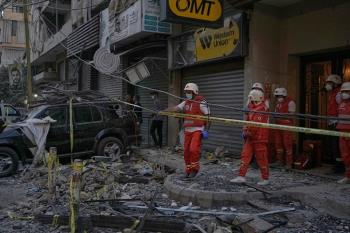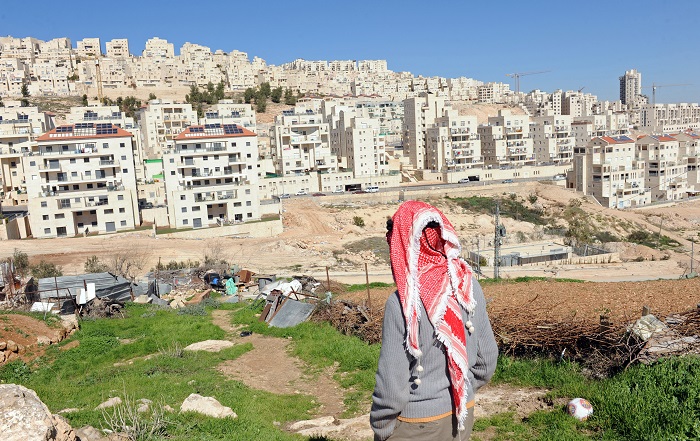Alwaght- The Israeli regime needs income sources to ensure its security and gain global prestige, something it tries to guarantee by exporting its products. The policy of building settlements and settling the Jewry in them has led them to seize the Palestinian lands as well as their natural resources, and at the same time damage unity of the Palestinian regions. Furthermore, the settlement policy made the Palestinian community be subordinate of the settlement building policies of the Israeli regime in West Bank and Al-Quds.
- Agriculture in the Israeli settlements
Land is a main factor causing conflict between the Israelis and Palestinians. By seizing the Palestinian lands, particularly the agricultural lands, and implementing the settlement building policies, the Israeli regime has taken under its control the only source of income of the Palestinians and so paralyzed the Palestinian economy. Tel Aviv government has always sought increasing the number of its settlers. This policy, of course, demanded appropriating of further Palestinian lands so that within 10 years the Israelis snatched over three times as big as the current territories from the Palestinians. Farming is the main career of many Palestinians, takeover of the Palestinian lands by the Israeli settlers left a direct negative impact on the Palestinian agricultural activities. Additionally, a plenty of Palestinian lands are located near the Israeli settlements. They are deprived of working on their lands due to security excuses of Tel Aviv.
Saturating the Palestinian markets with crops coming from the Israeli settlements is another method used to impair further the farming sector of the Palestinians. The revenues of Palestinian crops sales are never enough to pay back the farming costs, so they are sent disappointed and thus leave their lands. The quitted lands gradually turn into moorlands that are easily seized by the Israeli settlers and so are used for expanding their settlements. The considerable drop in crops production in the West Bank as a result of the lands seizure, failure of the Palestinian farmers to pay for their production costs and cheapness of their products in the market caused Palestine's economy lapse into deep recession and so become a subordinate of the Israeli economy. Therefore, the Palestinians are moving towards a service economy rather than a manufacturing economy.
Building the separation wall by Tel Aviv has caused many lands in northern, central, and southern West Bank to be lost by the Palestinians. This pushed the Palestinians to quit the rest of their farming lands, a process paved the way for the settlers to take them over. The separation wall at its initial stages has caused cutting off millions of olive trees, resulting in a considerable drop in olive oil production by the Palestinians. This, in turn, damaged 918,000 dunams of the West bank lands which the farming lands account for 86 percent of them. 70 percent of the West Bank residents whose main career is farming have left their farming activities and so are facing a real recession in crops production. The main reason is that three fourths of the lands qualified for farming in the West Bank are covered by the settlement plans of the Israeli regime. Up to 2012, the cultivated area of the Israeli lands in West Bank was 2.9 million dunams. 2 percent, or 61,700 dunams of them were ploughed by the settlers. 50 percent of these lands are located in Jordan Valley in eastern Palestine and the northern plains of the coast of the Dead Sea. Additionally, 2 percent of them are located in the West Bank. (See Table 1)
Table1: Area of cultivated lands the Settlements and out of them
|
Region |
Cultivated Area (per Dunam) |
||||
|
Grains |
Vegetables |
Citruses |
Rest |
Total |
|
|
Haifa and the North |
452.2 |
144.1 |
36.8 |
413.4 |
480.51 |
|
Tel Aviv and the Center |
113.3 |
144.1 |
83.1 |
70.0 |
410.5 |
|
Al-Quds and South |
784.5 |
419.3 |
63.1 |
83.2 |
1350.1 |
|
West Bank Settlements |
23.4 |
14.2 |
1.5 |
22.6 |
61.7 |
|
Total |
1.7% |
0.02% |
0.8% |
3.8% |
2.1% |
A large amount of farming lands in the West Bank settlements are specific for planting vegetables and citruses. Due to their high quality and variety, they are exported majorly to the EU countries and the US. The key income source of the Israeli settlers in the occupied Palestinian territories is farming. Some of the products like corn, potato and onion are consumed in the Israeli regime. Some others in addition to domestic consumption are exported, which include dates, Avocado, and medical, pharmaceutical, and industrial herbs. Some citruses like orange, lemon, and grapefruit, as well as different kinds of flowers including rose, clove, Gypsophila, and other types of ornamental flowers are also produced in the settlements. Other farming products exported abroad include grape and its derivatives, the summer crops such as melon, watermelon, cantaloupe, cucumbers, different types of pepper, tomato and its derivatives, cherry, sour cherry, different types of berry including the strawberry and blackberry.
The total amount of crops production of the Israeli regime up to 2012 touched $4 million. Every dunam of the Israeli settlements lands produces $1,400 worth of crops, and the total amount of their production is $79 million. Although this number is only 2 percent of the GDP of the Israeli regime, the significance of the agriculture of the regime is in providing the food companies with the raw materials that account for 40 percent of the products of the Israeli settlements.
- Role of the industrial zones
Still another source of income of the Israeli settlements is the industrial products that are both consumed inside the Israeli regime and are exported abroad. The products of these regions include plastic products, metal products, textiles, different types of carpets ground clothes, cosmetics, ornamental products, food, and alcoholic drinks. The key industrial regions are the Atron Industrial Park in northern Al-Quds, Mishor Adumim Industrial Park in eastern Al-Quds, Barkan Industrial Park in northern West Bank and Katzrin Industrial Park in the Golan Heights. The Israeli industrial zones are home to 21,740 industrial units in which 364,400 employees are working. The value added of total industrial products in the Israeli settlements is over $2.5 billion. The number of the industrial workers in settlements is less than 4,300, or 1.2 percent of the total number of the industrial workers across the Israeli regime. There is a considerable difference between the pays and value added share of every single worker in the settlements and other industrial zones. There is a 23 percent difference in salaries and 27 percent difference in the value added share of every worker in the settlements and inside the Israeli regime.(See Table 2)
Table 2: The status of industrial sector workers in settlements and out of them
|
Region |
Number of Workers (Per Thousand) |
Bonus of Every Worker (Per Thousand Shekel) |
Every Worker’s Production (Per Thousands Shekel) |
Value Added for Every Worker (Per Thousand Shekel) |
|
Israeli Regime |
364.4 |
156.2 |
856.9 |
266.6 |
|
Settlements |
4.3 |
26.9 |
790.2 |
210.1 |
|
Portion |
1.2% |
81% |
92% |
79% |
The number of companies in the West Bank settlements up to 2012 was 1,414. (See Table3)
Table 3: Israeli industrial zones in the settlements
|
Industrial Zone |
Location |
Area (Per Dunam) |
Number of Companies |
|
Atarot |
Al-Quds |
1550 |
192 |
|
Har Hotsim |
Al-Quds |
310 |
261 |
|
Adumim |
Ma'ale Adumim |
1600 |
230 |
|
Barkan |
Qalqilya Lands |
1300 |
154 |
|
Kedumim |
Qalqilya Lands |
1200 |
1 |
|
Ariel |
Qalqilya Lands |
850 |
16 |
|
Shahak |
Qalqilya Lands |
3000 |
14 |
|
Karnie Shemron |
Qalqilya Lands |
400 |
15 |
|
Gilo |
Nablus |
616 |
30 |
|
Banyamin |
Eastern Al-Quds |
650 |
16 |
|
Nabi Tesov |
Eastern Al-Quds |
166 |
Joint administration with Benyamin |
|
Gush Etzion |
Gush Etzion |
500 |
12 |
|
Mitrim |
Al-Khalil |
_ |
3 |
|
Kiryat Arba |
Al-Khalil |
2450 |
8 |
|
Nissi Shalom |
TulKarm |
_ |
10 |
|
Alizehaf |
Sloweet |
_ |
7 |
|
Ma'ale Efrayim |
_ |
_ |
7 |
|
Kfar Tabvah |
_ |
_ |
4 |
|
Off Industrial Zones` |
_ |
_ |
50 |
Between 1999 and 2012 the rate of growth of the industrial companies in the settlements was reported 20 percent, which meant bigger than the 14 percent growth of the industrial companies inside the Israeli regime. Additionally, up to 2009, 17 industrial zones were built on the settlements. Up to 2011 this number increased to 20.
Now let's shed light on some of the important industrial zones inside the settlements and their industrial units.
1. Barkan Industrial Park: Barkan Industrial Park is located 25 kilometers east of Tel Aviv in Barkan settlement. It is considered as the largest industrial zone in West Bank. It accommodates 154 industrial, trade, and service companies as follows: 12 food industry companies, 4 wood industry companies, 3 sewing businesses, 13 textiles companies, 20 minerals products companies, 11 carpet galleries, 4 aluminum production units, 14 plastic products companies, 3 air conditioners manufacturing companies, and the rest are active in trade and service sectors.
2. Mishor Adumim Industrial Park: This zone is located in Al-Quds and contains 192 industrial, trade, and service companies. 17 percent of these companies are active in food industry, 20 percent in wood and carpet industry, and 20 percent are in smith and minerals industries, as well as service stations. (See Table4)
Table 4: Number of companies and their specialty in Adumim Industrial Park
|
Specialty |
Number of Companies |
|
Aluminum |
12 |
|
Carpentry and Carpet Industry |
40 |
|
Building equipment |
18 |
|
Food |
34 |
|
Repair Service |
12 |
|
Mines |
13 |
|
Smithing Industries |
14 |
|
Plastic Industry |
4 |
|
Printing and Distribution |
14 |
|
Textile Industry |
5 |
|
Rest |
26 |
|
Total |
192 |
3. Atarot Industrial Park. Located in Al-Quds, Atarot includes 209 companies in different industrial, trade and service sectors. The companies include 9 construction companies, 3 cleaning products companies, 36 food packaging companies, 25 trade companies, 15 smithing businesses, 2 cosmetics companies, 2 textile companies, 4 steel companies, 4 minerals production companies, and the others are service companies.
About 65 percent of the industrial companies are located in center of the Israeli settlements. But over 15 percent of the industrial activities are existing in Barkan Industrial Park in northern West Bank. Food industries account for 40 percent, paper industries account for 14 percent, and construction materials account for 10 percent of the Israeli settlements' products.
Furthermore, construction gravel and sand industries account for 20 to 30 percent of the construction materials production in the Israeli regime. The companies work without supervision by the environment organizations. Their incomes go directly to the Israeli government's treasury. The number of the gravel and sand companies up to 2010 was 30, and they annually produced 12 million tons of different types of stones, gravel and sand. 75 percent of the 12 million tons, namely about 9 million tones, are used at home while 3 million others are used in construction works of the settlements and the infrastructure industries in West Bank. (See Table 5)
Table 5: Mines in the settlements
|
|
Name of Mine |
Location |
Name of Owner |
|
1 |
Hansen |
Nahel Rayet |
Ramat John |
|
2 |
Barkan |
Barkan |
Ibn Yehuda |
|
3 |
Kokhav Hashhar |
Romon Village |
Kokhav Hashhar |
|
4 |
Natov |
Western Ramallah |
Petah Tikva |
|
5 |
Mitrim |
Mitrim |
Beit Shemesh |
|
6 |
Kvar Gelmedi |
Kvar Gelmadi |
Kvar Gelmedi |
|
7 |
Beth Hajai |
Southern Al-Khalil |
Beth Hajai |
|
8 |
Mukavelat Medan |
_ |
Rahoyous |
|
9 |
Netvi Bitar |
_ |
Eshtrom Eilat Co. |
|
10 |
Selit Adumim |
Anana Lands |
Ma'ale Adumi M |
|
11 |
Yanir |
Southern Yata |
_ |
|
12 |
Nekdumim |
Al-Tamira Lands |
Holystone Work |
|
13 |
Pablam |
Al-Zahriah |
_ |
|
14 |
Jamrore |
Turquia |
_ |
Since mid-1990s up to now, the Israeli economy witnessed a remarkable boom. The average annual growth rate of the GDP from 1996 to 2009 was 4 percent. Although the industry share in the economy dropped from 17 percent to 14 percent and at the same time the farming and trade sectors saw a similar drop, the participatory share of the other sectors observed a rise from 21 percent to 27 percent. So, during the past two decades, the Israeli regime's economy transformed from a traditional industrial and agricultural economy to an advanced and technology-based economy. The high-tech products account for 40 percent of the exported goods.



























